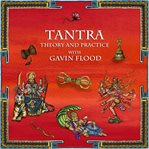Details
PUBLISHED
Made available through hoopla
EDITION
DESCRIPTION
1 online resource (1 audio file (1hr., 53 min.)) : digital
ISBN/ISSN
LANGUAGE
SERIES
NOTES
Read by Gavin Flood
Over five lectures, Gavin Flood, professor of Hindu Studies and Comparative Religion in the Theology and Religion Faculty at Campion Hall at Oxford University, gives an overview of the history, theory and practice of Tantra. He explores aspects from the Śaiva Siddhānta tradition to the Non-Saiddhāntika, to Buddhist Tantra. He gives an overview of the many developments in thought, cosmologies and the varied and fascinating practices that have emerged over the centuries.Se ssion 1Tantra in history, an overviewS ession 2 The Śaiva Siddhānta Tradition, rituals, cosmology, initiation and liberationSe ssion 3The Non-Saiddhāntika traditions including the path of purity and the path of powerSe ssion 4Tantric Śaiva views of the self, the porous self & the gnostic self, Tantric meditationSe ssion 5Buddhist Tantra - Vajrayāna and the influence of ŚaivismGavin Floodis a Professor of Hindu Studies and Comparative Religion in the Theology and Religion Faculty and academic director of the Oxford Centre for Hindu Studies. Gavin read Religious Studies and Social Anthropology at Lancaster University and taught at the universities of Wales (Lampeter) and Stirling before coming to Oxford. He was elected to membership of the British Academy in 2014. His research interests are in medieval Hindu texts (especially from the traditions of Shiva), comparative religion, and phenomenology. Two recent books are The Importance of Religion: Meaning and Action in Our Strange World (Oxford: Blackwell, 2013) and The Truth Within: A History of Inwardness in Christianity, Hinduism and Buddhism (Oxford University Press, 2014)
Mode of access: World Wide Web







